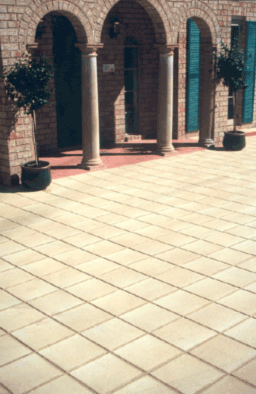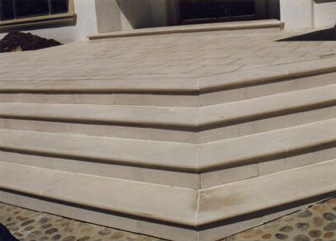Walkway
Paver Materials
There
is a wide variety of material used to manufacture walkway
pavers. Here is a list of some of the materials that you can
use to pave your walkways with:
- Concrete
Pavers
- Brick
Pavers
- Paver
Lights
- Rubber
Pavers
- Clay
Pavers
- Cobblestone
Pavers
- Bluestone
Pavers
- Sandstone
Pavers
- Granite
Pavers
- Flagstone
Pavers
- Slate
Pavers
- Rock
Pavers
|
|
How
to Build a Walkway How
To Install a Walkway
- The
first step is easy: you just need to remove the old
walkway if there was one, then just clear any vegetation.
Always remember to use good gloves and safety glasses,
when using machinery.
- Your
next step is to measure and mark out your walkway.
Once you have decided how wide and long you want it,
use stakes and tight string to layout your walkway.
- Now
its time to dig out the bed of your walkway. You will
need to dig a trench 8 inches deep. After this, ensure
that your bed is level and compacted.
- Following
this is your base material, which is usually crushed
gravel. Add a 4 inch layer of the crushed gravel.
- In
order to work out how much material you will need,
simply multiply the length, the width and the depth
together, and that will give you the amount of cubic
meters of material you will need. It is also suggested
that you add 5%, to accommodate for some that will
be cut or split, to fit odd spaces.
- The
base material must be leveled and then compacted.
You may need to use a tamper. Make sure the base is
compacted properly, for this is very important for
the durability of your walkway.
- Now
you need to add a 2 inch layer of coarsely grained
sand. The sand must be made of sharp edged particles,
so they will compact together better. Compact down
the sand layer.
- In
order to work out how many walkway pavers you will
need, multiply the full length of the walkway, by
the width of the walkway. This will give you the amount
of square meters of brick pavers that you will need.
Again add 5% for those that will be cut and split.
If your walkway is curbed, separate into two or three
areas, and measure the walkway in sections, then total
them all at the end.
- Choose
the design you wish to use for your walkway. Often
people choose a pattern for the edges and one for
the middle section.
- Start
to lay the first row of walkway pavers along the width
of the walkway. Ensure that you donít push the bricks
into the sand, just lay them on top gently, this will
make a flatter walkway.
- If
you need to cut some of the walkway pavers, be sure
to use a diamond cut blade, for best results.
- Once
all the walkway pavers have been laid, you should
now sweep dry sand over the surface, filling in the
joints.
- Run
a plate compactor over the pavers only once. Then
sweep some more sand over the surface again. You may
also need to do this a few more times, particularly
after severe storms.
|
|
|





|
|